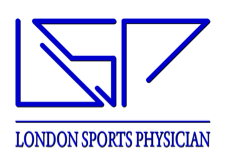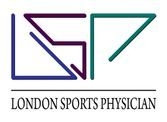Spinal Injections
Introduction
There are times when an image-guided spinal injection can be very helpful in managing severe or persistent spinal pain.
Dr Seah had training and practical experience in these procedures as part of his specialist training but does not perform these anymore. He will therefore refer you on to trusted consultant colleagues to carry out these procedures for you.
The consultant performing the procedure can explain the specifics in more detail, but general principles are highlighted below to introduce what is involved…
General principles
Spinal injections are commonly performed for patients suffering from:
- Localised back pain (sometimes referred to as ‘lumbago’) or neck pain,
- Referred pain from the lower back into the legs (‘sciatica’),
- Referred pain from the neck into the arms (‘brachalgia’),
- Pain arising from the sacroiliac joints.
A combination of the above may be warranted and several injections can be carried out in the same session.
These are performed as daycase procedures (lasting on average 30- 60 minutes) and you will be able to return home the same day. Patients will usually be asked to lie on their front (prone position) or on their side, depending on the area that is being injected.
The medication injected comprises a mixture of corticosteroid and local anaesthetic. Fast-acting local anaesthetic will often be injected into the skin and surrounding tissue initially to make the procedure less uncomfortable.
Although not a cure, spinal injections are often carried out as part of the overall management. They can be performed for diagnostic and therapeutic reasons. Image-guidance (usually CT or x-ray) is used to ensure accuracy of needle placement. They are also performed under sterile conditions to minimise the risk of infection.
These injections help to settle the pain and inflammation associated with many spinal conditions, allowing patients to participate in rehabilitation therapy (e.g. physiotherapy/ osteopathy/ chiropractic) afterwards.
Repeat injections can be administered if necessary and after discussion with Dr Seah.
When you see the consultant who performs the injection, it is important to ask any questions you may have and ensure you feel fully informed about the procedure and post-injection instructions before proceeding.
Common types of spinal injections
A/ EPIDURAL INJECTIONS
Epidural injections are used to reduce severe back pain and/or radicular pain (neurological pain referring to the leg or arm).
They have been in use since the 1950s. This is the type of injection that women giving birth often have (to reduce pain below the level of the injection) and can be very effective.
The needle is passed into the dural sac that covers the spinal fluid and nerves. Image-guidance is used to ensure accuracy and safety. Once the intended location has been confirmed, the injection of corticosteroid and local anaesthetic is administered.
This type of injection can be very useful for reducing pain. Caudal/ lumbar/ thoracic / cervical epidurals refer to the anatomical location of these injections.
B/ NERVE ROOT INJECTIONS
This is also known as a ‘transforaminal epidural injection’.
This is more of a targeted injection to one or more nerve roots that may be inflamed. This is noted from a bulging disc or bony tissue pressing onto a nerve root, often identified beforehand on an MRI scan.
Nerve root involvement often results in pain being experienced into the arm or leg (from a neck or back problem respectively).
This injection is helpful for two reasons- reducing pain (therapeutic effect) and also confirming the particular nerve root affected (diagnostic effect). (The latter reason is important for the few cases that may require spinal surgery subsequently. It is vital the surgeon is aware which nerve root is likely to be the main pain generator.)
C/ FACET JOINT INJECTIONS
The facet joints are small joints present on both sides of the vertebrae which help to link up the spinal levels. These run throughout the spinal column and are present in the neck (cervical), upper back (thoracic) and lower back (lumbar).
Patients with facet joint pain may complain of pain on lumbar extension or upon waking in the morning. After the age of 30 years, facet joint degeneration can often be seen but for many, it does not cause any issues. For others, it may cause severe debilitating pain from which they struggle to get comfortable.
This injection is also used for both treatment and diagnostic purposes. If most or all of a patient’s back pain is relieved by the injection, it confirms the facet joint/s as the source of the pain.
D/ SACROILIAC JOINT INJECTIONS
The sacroiliac (SI) joints lie below the lumbar spine and above the tailbone (coccyx). It connects the sacrum (the bone at the bottom of the spine) to the iliac crest (part of the pelvis).
Patients with sacroiliac joint injuries may present with localised back or buttock pain or referred pain going down the leg. These may have arisen from trauma or biomechanical causes. Patients may struggle to get comfortable sitting down for any prolonged periods.
Diagnosis will be made by a combination of patient history, clinical examination and imaging (often MRI and/ or x-rays). Sacroiliac joint injections are carried out for diagnostic and therapeutic reasons.


